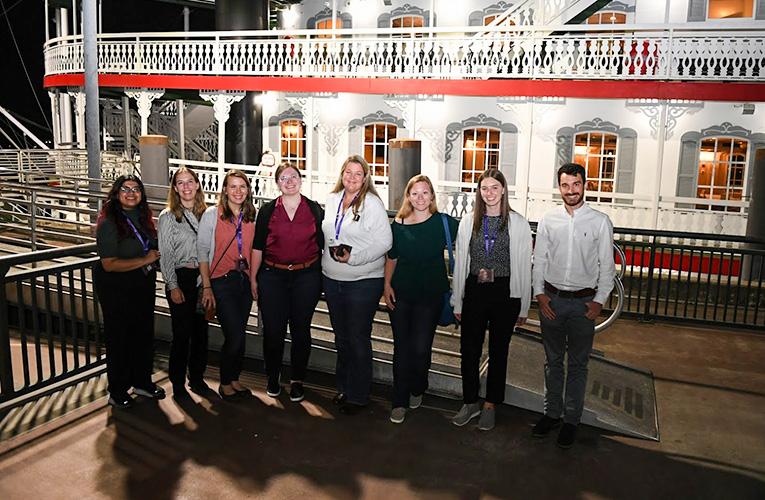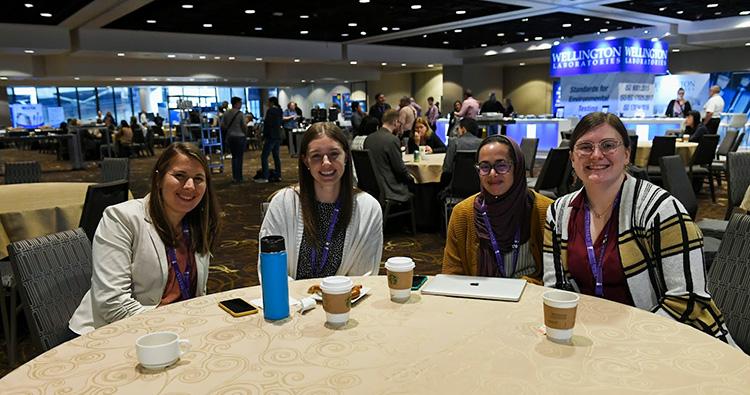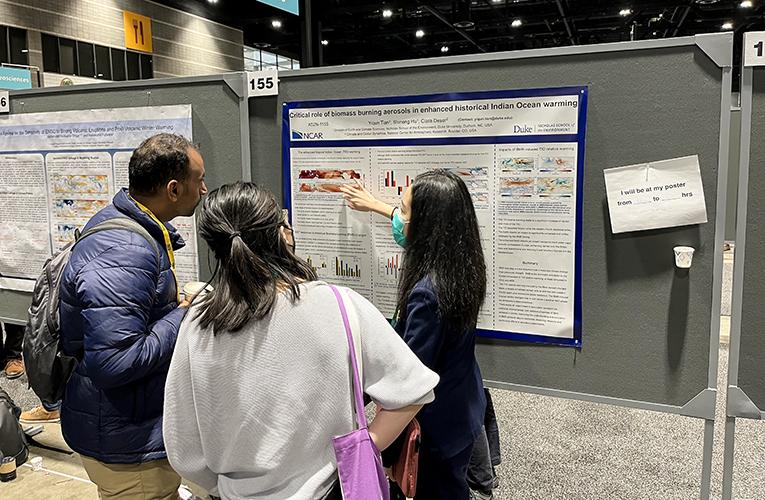The Stapleton Lab, led by Heather Stapleton, Ronie-Richele Garcia-Johnson Distinguished Professor, is an environmental health-focused analytical chemistry laboratory. Research within the Stapleton lab focuses on the characterization and identification of halogenated and persistent chemicals in consumer products and building materials to understand potential exposure and health effects. Lab members seek to understand variables that strongly influence exposure (behaviors, geographic location, etc.) in order to develop strategies to reduce exposure and health risks. This is particularly important for improving the health of vulnerable populations, such as children and pregnant women as well as low-income and minority communities who often receive higher exposures to hazardous chemicals.
Catherine Wise, a postdoctoral associate, recently shared insights into the Stapleton Lab, its research, her experience in the lab and the opportunities the lab offers Duke students.
What is the lab's research focus and what big questions is it trying to answer?
"The Stapleton Lab is an analytical chemistry lab focused on toxicology and environmental health. The research focus is exposure science with interests in chemicals found in the natural and built environment. We analyze samples from different matrices, including consumer products, environmental and human samples, for organic chemicals to assess human exposures. Our laboratory is also helping to pioneer the use of a personal wearable sampler, the silicone wristband, to provide more detailed information on chemical exposures. Several exposure science projects focus on specific groups such as firefighters, pregnant women, children and companion animals. We aim to better understand how environmental chemicals affect human health with particular interests in chemical mixtures and metabolic and endocrine health outcomes."
What has been your favorite or most rewarding experience in the lab so far?
"My work focuses on the use of pet dogs as sentinels for human environmental health. Our pets share our environment and thus many of the same chemical exposures. Many diseases, such as cancers, are very biologically and clinically similar in dogs and people. Due to their shorter lifespan, dogs often exhibit health effects associated with chemical exposures earlier and serve as an early warning system. My research is rewarding because it can have implications for helping the health of people and their pets. I have been able to engage with other researchers from around the world and pet owners to share my research."
What opportunities does your lab offer students and how does that experience contribute to their academic and career growth?
“The Stapleton lab supports undergraduate and graduate students, postdocs and technicians working on very diverse projects, assessing environmental exposure to organic contaminants through analysis of environmental samples, biological tissues and consumer products. Dr. Stapleton encourages lab members to pursue projects that they’re passionate about and supports opportunities and collaborations to help trainees achieve their goals. There are many opportunities for professional development, and Dr. Stapleton encourages students to present at notable conferences specific to their research interests.”
Each month the Nicholas School will highlight the work of one of its labs through the lens of a lab member. For more information on Duke Environment research visit our research page and to keep up with the latest news, subscribe to our monthly Research + Impact email newsletter.





